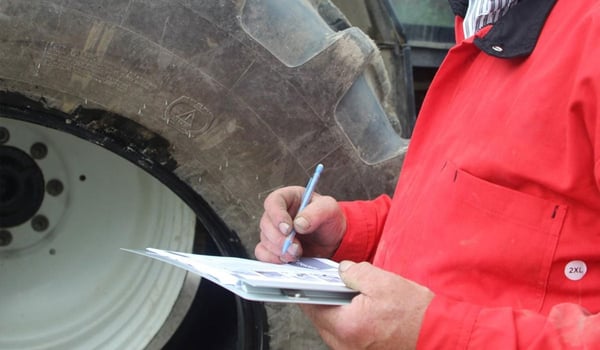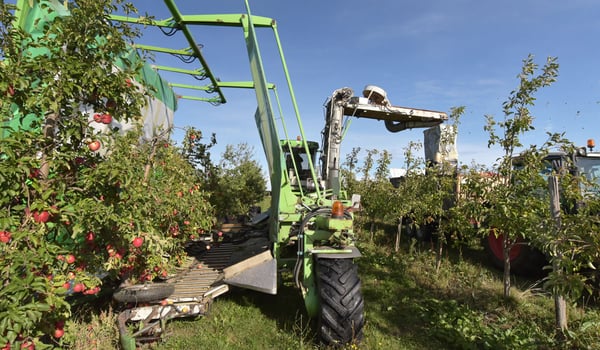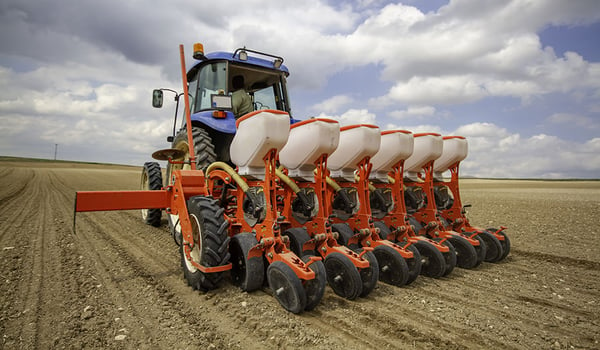BRIDGESTONE EUROPE NV/SA
AG Department
Kleine Kloosterstraat 10
1932 Zaventem
Belgium
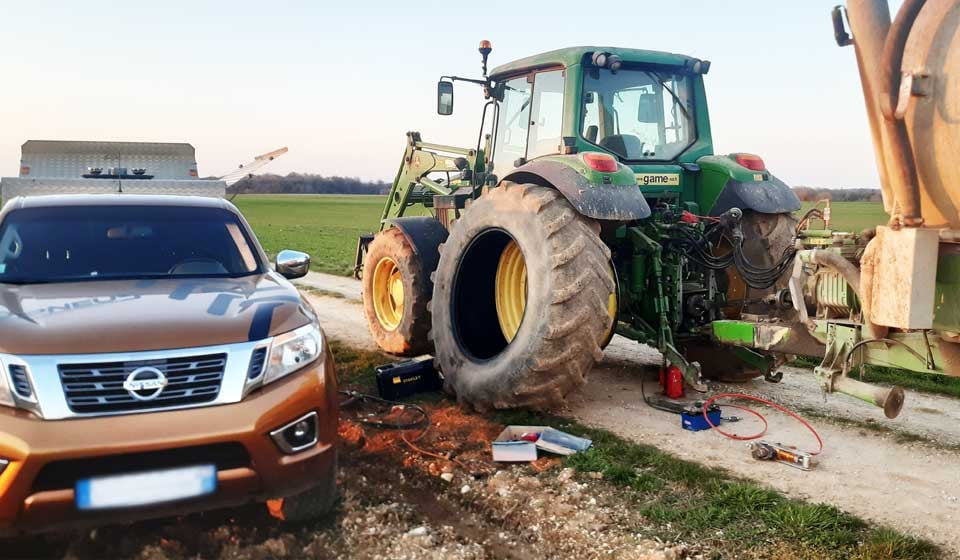
Authored by: Tractor tyre expert | 31 July 2023
A breakdown in your hangar, when you find a flat tyre in the early hours of the morning, is not at all the same situation as an emergency breakdown service for an agricultural tyre mid-operations in the field when you have a tight schedule and a full day’s work ahead.
Certain breakdowns are avoidable, such as those linked to excess wear. Others can’t be avoided, but can be anticipated, particularly as far as the urgency is concerned. A good relationship with your tyre dealer is the key to a successful breakdown service.
A breakdown mid-field is a difficult situation which causes a great deal of stress, a considerable loss of time and repair costs that are always unwelcome.
Yet in a good number of cases, certain breakdowns are avoidable or at least can be foreseen and managed calmly in a hangar on the farm.
Anticipating a breakdown is always a good precaution compared with the problems caused by an emergency breakdown service.
You can try and use your tyres until they are threadbare to avoid replacing them frequently and save money.
Yet this is not always a good idea, because the risk of a puncture or tear is much higher with worn tyres and the consequences could be disastrous.
This type of breakdown can cause an accident on the road, especially when your tractor is loaded and you have a high inflation pressure in worn tyres.
When you notice a bump on the sidewall of your tyre, even a tiny one, be careful because the internal structure of the tyre may be damaged.
The causes may be multiple, including: a lateral impact caused by a branch, root or stone.
Demount the tyre and carefully check the inside to detect any break in the casing ply:
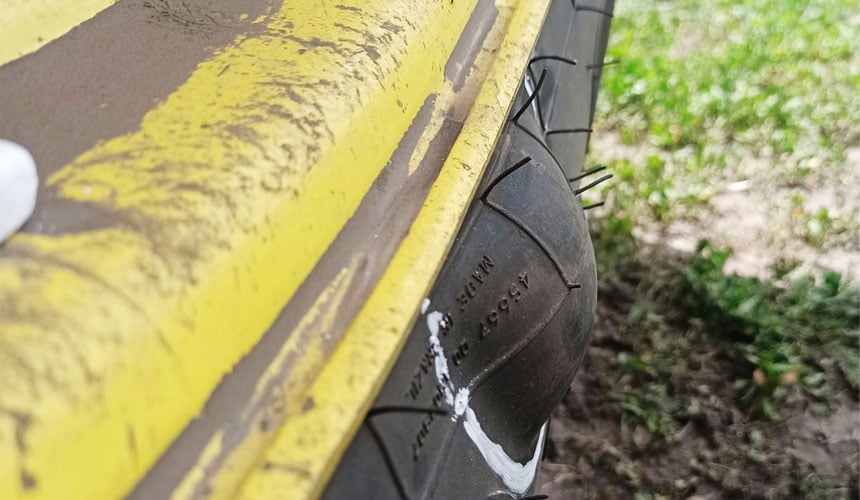
Visible cuts on your agricultural tyre are generally due to stubble that is too hard, such as corn or sunflower stubble.
Certain are without any serious risk, whereas others may necessitate replacement of the tyre:
Most punctures occur at the beginning of the harvest due to minor problems that had already begun to appear at the end of the previous season.
A simple tyre check-up during the winter makes it possible to detect irregularities that may seem insignificant, such as a badly located fissure or an impact mark. These signs may indicate a possible break in the internal structure which could get worse during storage or due to lack of use of the tyres.
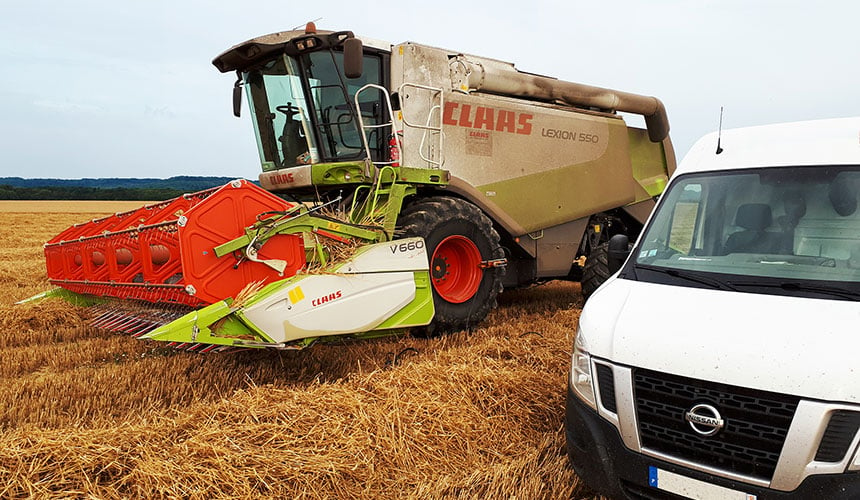
Insufficient inflation pressure can cause separation of the bead, loss of pressure or make the tyre come off the rim, obliging you to replace your tractor tyre immediately.
The tyre may come off the rim at any moment:
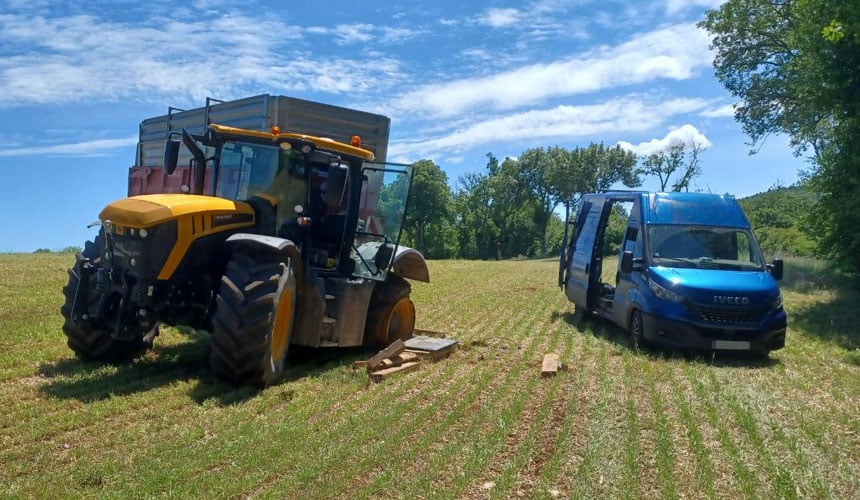
Adjusting pressure settings is directly related to respecting the speed rating indicated on the sidewall of your agricultural tyre.
If the pressure is too low and the speed too high in proportion, the risk of an accident increases significantly.
Just like the speed rating, the load index is marked on the sidewall of an agricultural tyre.
If you go beyond a certain threshold, you run the risk of damaging your tyre rapidly, especially if you don’t have the right pressure settings.
During the harvest for example, you must manage the load carefully in order to make the best possible use of your tractor’s capacities.
Too much load results in the tyre being crushed and can cause a puncture, because the sidewalls which are less resistant than the tread come into contact with the ground.
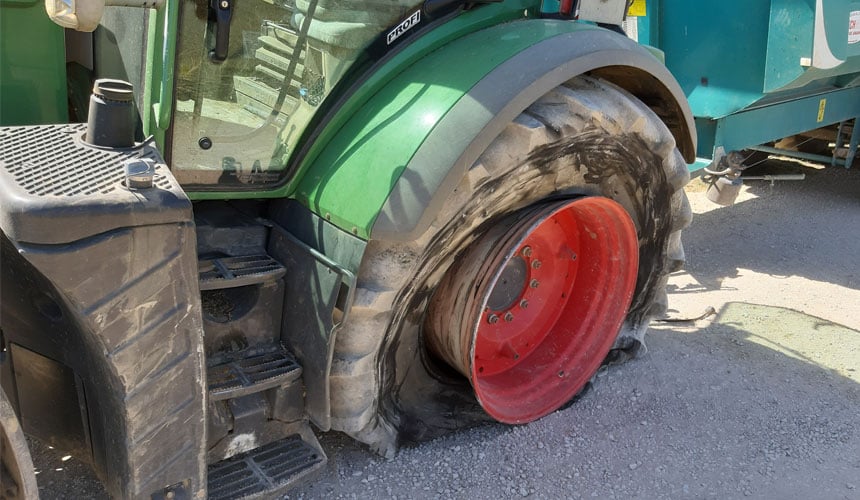
The risk of an accident and breakdowns during production can often be avoided, simply by taking a few minutes to check the condition of your agricultural tyres on a regular basis.
If you discover one of these problems while you are driving, it is vital that you contact your tyre dealer rapidly to avoid the problem getting worse and leading to a breakdown.
Ideally you will be able to avoid the breakdown service and manage the problem calmly in the farm courtyard.
For a breakdown service in the fields, the average response time depends on how far away the tyre technician is from your work site.
On average, a competent professional can deal with a puncture within 2 to 4 hours, if you are close to their garage.
If you are far away, on the other hand, you will have to include the travel time.
Tyre technicians are often overly busy at the beginning of the harvest season, for the reasons mentioned above.
If you have a breakdown during this period, you may have to be patient, because certain dealers who cover large agricultural areas will only be able to come out at the end of the day, depending on their work schedule.
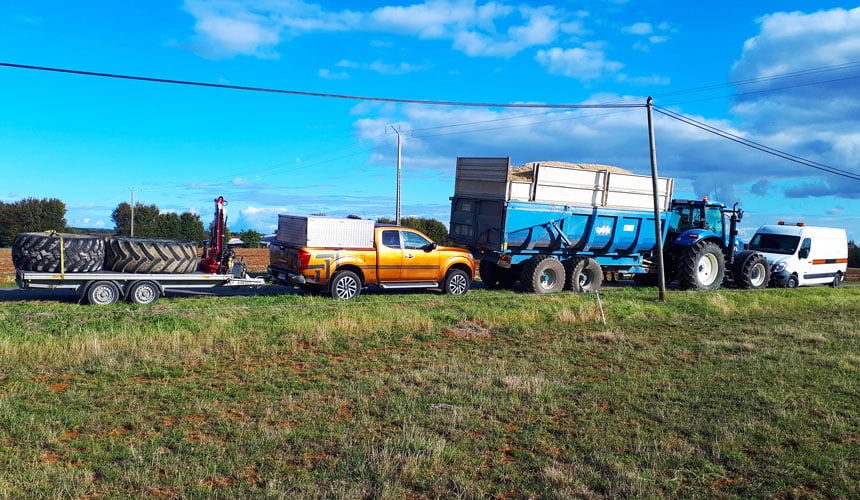
When you contact your agricultural tyre dealer or technician, make sure that you take the time to explain the problem in detail over the phone, to allow them to prepare as well as possible. Tell them the size of the tyre that needs repairing, the accessibility of the machine in the field: sloping land, soft ground…..
With this information, they will be able to come out with a new tyre that is adapted to your situation, if they have your tyre model in stock.
ALTERNATIVE SOLUTION: If your tyre dealer does not have your tyre model in stock, a spare wheel with the same dimensions can be used. You will be able to continue work while your tyre is being repaired or until your new tyre is delivered.
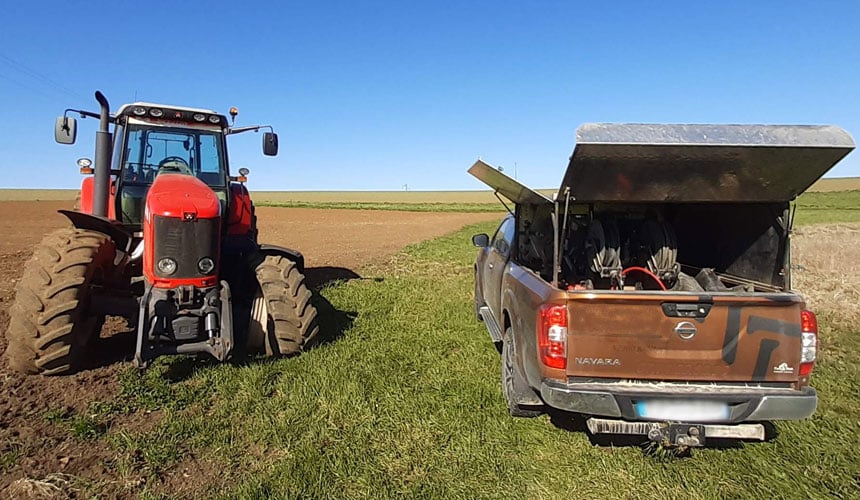
In the event of a puncture, emergency breakdown services are generally very efficient because they do not require a replacement tyre or a new tyre to be ordered, whose size corresponds to your machine.
Your tyre dealer can work rapidly on the vehicle on site without wasting any time loading up a replacement tyre.
BEWARE, on the other hand, that if you want the puncture to be easily repairable, it is totally unadvisable to drive with a flat tyre, whatever the situation. This will just destroy your tyre completely whereas a basic puncture is often quick to repair.
When you buy agricultural tyres, ensure that you maintain a good commercial relationship with your tyre dealer so that you will be able to count on them or their team of technicians for a more rapid breakdown service when necessary.
Good relations with your tyre dealer often condition the rapidity of their response time.
Certain problems such as small cuts on the sidewalls or punctures can be fixed with an emergency breakdown service.
However, in most cases breakdowns can be avoided thanks to regular check-ups and proper use of your tyres in accordance with manufacturer recommendations.
This may take a little time on a regular basis but will avoid you wasting a lot of time at the worst possible moment.
We have developed a complete guide for you to download free of charge “Everything you need to know about mounting & demounting tractor tyres”
Most people who read this article have also read some of the following articles:
